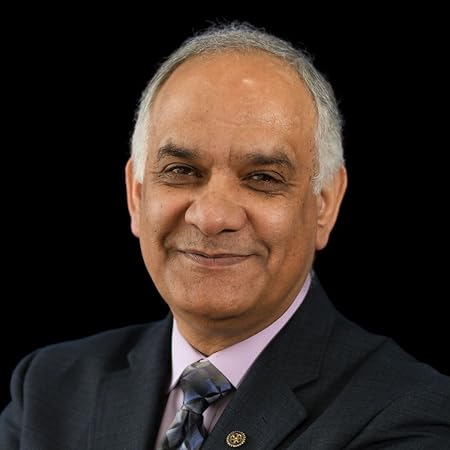We hear it all the time, in films, in healthcare, even in businesses – grown adults speaking to their elders as if they were talking to little children. That kind of well-intentioned, patronizing talk actually has a name: it’s called elderspeak. And many seniors and their loved ones are saying it’s time to knock it off.
This week we read an insightful article about the perils of elderspeak on the website of KFF Health News, written by New York Times reporter Paula Span. (This article is part of a series on aging jointly produced by the New York Times and KFF Health News.) Span describes the common practice of talking down to seniors, calling them “Honey” or “Sweetie,” making them appear childlike and frail. These so-called endearments are not only inappropriate, says Span, but they can also be downright harmful, causing some seniors to lash out or resist needed care.
This article is a powerful reminder that, like any of us, the elders among us deserve to be treated with dignity, not coddled, demeaned, and patronized. Let’s take a deeper look.
Dad Asks, “Are We Getting Married Now?”
Span begins her article with what she calls a “prime example” of elderspeak.
Cindy Smith was visiting her father’s assisted living apartment in Roseville, California. An aide, in trying to induce Smith’s father to do something, said, “Let me help you, sweetheart.”
Smith recalls, “He just gave her The Look — under his bushy eyebrows — and said, ‘What, are we getting married?’”
Smith had a good laugh about it. Her father was 92 at the time, a veteran of World War II and a retired county planner. His vision had been reduced by macular degeneration and he needed a walker to get around, but he was as sharp as ever. “He wouldn’t normally get too frosty with people,” Smith says. “But he did have the sense that he was a grown-up and he wasn’t always treated like one.”
Use of Elderspeak Conveys Frailty, Incompetence
Span notes that most people understand intuitively what “elderspeak” is.
“It’s communication to older adults that sounds like baby talk,” says Clarissa Shaw, a dementia care researcher at the University of Iowa College of Nursing and a co-author of a recent article that helps researchers document its use. “It arises from an ageist assumption of frailty, incompetence, and dependence.”
The use of “inappropriate endearments” are a hallmark of this kind of talk. Kristine Williams, a nurse gerontologist at the University of Kansas and co-author of the article, explains, “Elderspeak can be controlling, kind of bossy, so to soften that message there’s ‘honey,’ ‘dearie,’ ‘sweetie.’ We have negative stereotypes of older adults, so we change the way we talk.”
Elderspeak: Plural Pronouns, Tone of Voice, Choice of Words
Aside from the sugary-sweet endearments, Span also notes the use of plural pronouns: for example, Are we ready to take our bath? Williams says that the implication there “is that the person’s not able to act as an individual. Hopefully, I’m not taking the bath with you.”
Other elderspeak highlights include louder volume, shorter sentences, or simple words said slowly. “Or they may adopt an exaggerated, singsong vocal quality more suited to preschoolers, along with words like ‘potty’ or ‘jammies,’” Span adds.
Another is something called tag questions (example: It’s time for you to eat lunch now, right?). “You’re asking them a question but you’re not letting them respond,” Williams explained. “You’re telling them how to respond.”
Studies Document the Widespread Use of Elderspeak
Sadly, studies conducted in nursing homes have revealed how common this type of speech is.
Span writes, “Bottom of FormWilliams, Shaw, and their team analyzed video recordings of 80 interactions between staff and residents with dementia, they found that 84 percent involved some form of elderspeak.”
Williams notes, “Most of elderspeak is well intended. People are trying to show they care. They don’t realize the negative messages that come through.”
Elderspeak Can Cause Dementia Patients to Resist Care
An example of this negativity can be found in nursing home residents with dementia: studies have found a relationship between exposure to elderspeak and behaviors collectively known as resistance to care.
“People can turn away or cry or say no,” Williams explains. “They may clench their mouths shut when you’re trying to feed them.” Sometimes, she adds, they push caregivers away or strike them.
To help combat this, Williams and her team have developed a training program called CHAT, for Changing Talk. This program includes three hourlong sessions that include videos of communication between staff members and patients, and is intended to reduce elderspeak.
Training Reduces Elderspeak and Improves Patient Outcomes
Results prove that this program really does work. “Before the training, in 13 nursing homes in Kansas and Missouri, almost 35 percent of the time spent in interactions consisted of elderspeak; that share dropped to about 20 percent afterward,” Span writes. “Furthermore, resistant behaviors accounted for almost 36 percent of the time spent in encounters; after training, that proportion fell to about 20 percent.”
Another study conducted in a Midwestern hospital, also among patients with dementia, found the same sort of decline in resistance behavior.
Training Also Reduces Reliance on Dangerous Drugs
CHAT training in nursing homes is also associated with lower use of antipsychotic drugs.
The results did not reach what’s called statistical significance because the sample size was too small, but the research term did deem the results “clinically significant.”
“Many of these medications have a black box warning from the FDA,” Williams said of the drugs. “It’s risky to use them in frail, older adults” because of their side effects. But many nursing homes use them anyway to calm aggressive or unmanageable residents.
To further expand its reach, Williams, Shaw, and their colleagues have streamlined the CHAT training and have adapted it for online use. They are examining its effects in 200 nursing homes all over the country.
Span adds that even without a formal training program, individuals and institutions can and should combat the use of elderspeak. Kathleen Carmody, owner of Senior Matters Home Health Care and Consulting in Columbus, Ohio, cautions her aides to address clients as Mr. or Mrs. or Ms., “unless or until they say, ‘Please call me Betty.’”
Correcting Staff Behavior Doesn’t Have to be Adversarial
There’s a concern in the long-term care world that correcting the way staff members speak could create a sense of antagonism. But Shaw notes that objecting to elderspeak doesn’t have to become adversarial.
Span writes, “Residents and patients — and people who encounter elderspeak elsewhere, because it’s hardly limited to health care settings — can politely explain how they prefer to be spoken to and what they want to be called.”
Cultural Differences Trigger a Range of Reactions
Cultural differences should not be discounted here, either, and Span includes these considerations in her conclusion. Felipe Agudelo, a teacher of health communications at Boston University, points out that in certain contexts a diminutive or term of endearment “doesn’t come from underestimating your intellectual ability. It’s a term of affection.”
Agudelo emigrated from Colombia, where his 80-year-old mother takes no offense when a doctor or health care worker asks her to “tómese la pastillita” (take this little pill) or “mueva la manito” (move the little hand). In those settings that’s considered customary, and “she feels she’s talking to someone who cares,” Agudelo says.
“Come to a place of negotiation,” he advises. “It doesn’t have to be challenging. The patient has the right to say, ‘I don’t like your talking to me that way.’”
In return, the worker “should acknowledge that the recipient may not come from the same cultural background,” he says. That person can respond, “This is the way I usually talk, but I can change it.”
Rajiv Nagaich – Your Retirement Planning Coach and Guide
The long-awaited book by Rajiv Nagaich, called Your Retirement: Dream or Disaster, has been released and is now available to the public. Retirement: Dream or Disaster joins Rajiv’s ground-breaking DVD series and workbook, Master Your Future, as a powerful planning tool in your retirement toolbox. As a friend of AgingOptions, we know you’ll want to get your copy and spread the word.
You’ve heard Rajiv say it repeatedly: 70 percent of retirement plans will fail. If you know someone whose retirement turned into a nightmare when they were forced into a nursing home, went broke paying for care, or became a burden to their families – and you want to make sure it doesn’t happen to you – then this book is must-read.
Through stories, examples, and personal insights, Rajiv takes us along on his journey of expanding awareness about a problem that few are willing to talk about, yet it’s one that results in millions of Americans sleepwalking their way into their worst nightmares about aging. Rajiv lays bare the shortcomings of traditional retirement planning advice, exposes the biases many professionals have about what is best for older adults, and much more.
Rajiv then offers a solution: LifePlanning, his groundbreaking approach to retirement planning. Rajiv explains the essential planning steps and, most importantly, how to develop the framework for these elements to work in concert toward your most deeply held retirement goals.
Your retirement can be the exciting and fulfilling life you’ve always wanted it to be. Start by reading and sharing Rajiv’s important message. And remember, Age On, everyone!
(originally reported at https://kffhealthnews.org)


